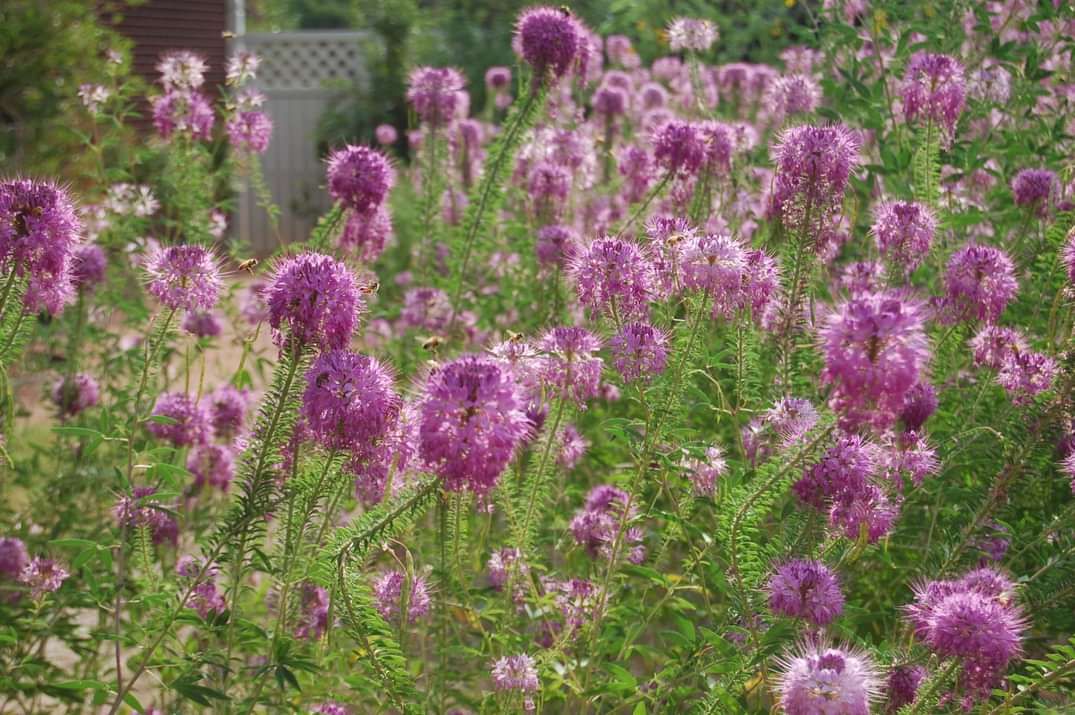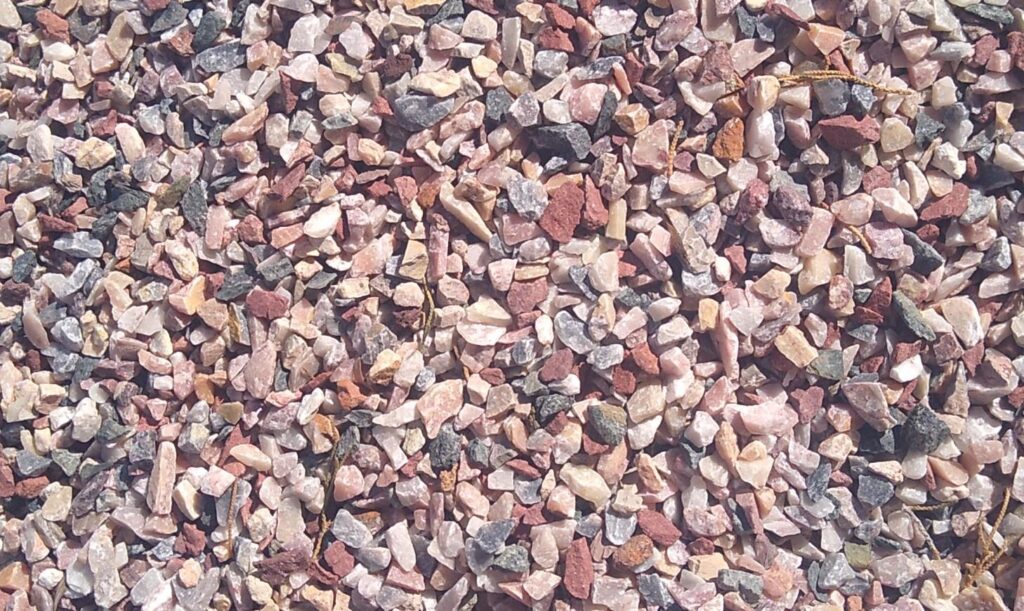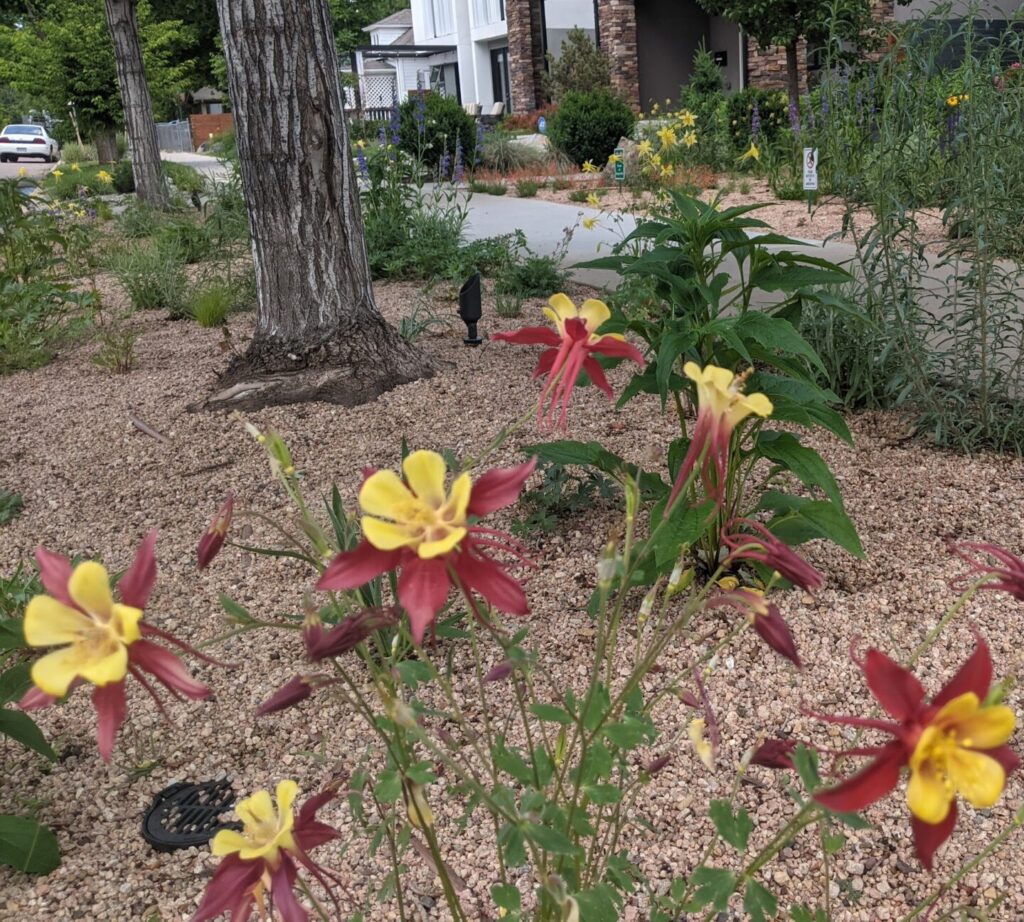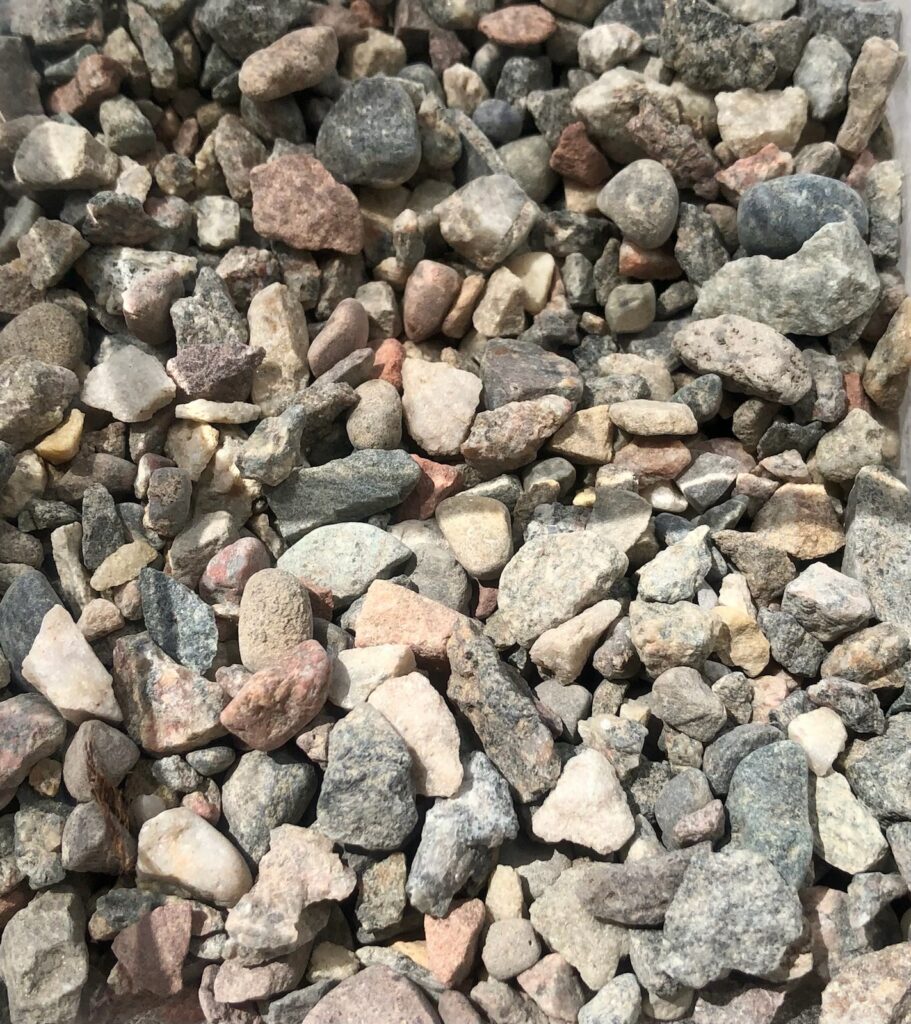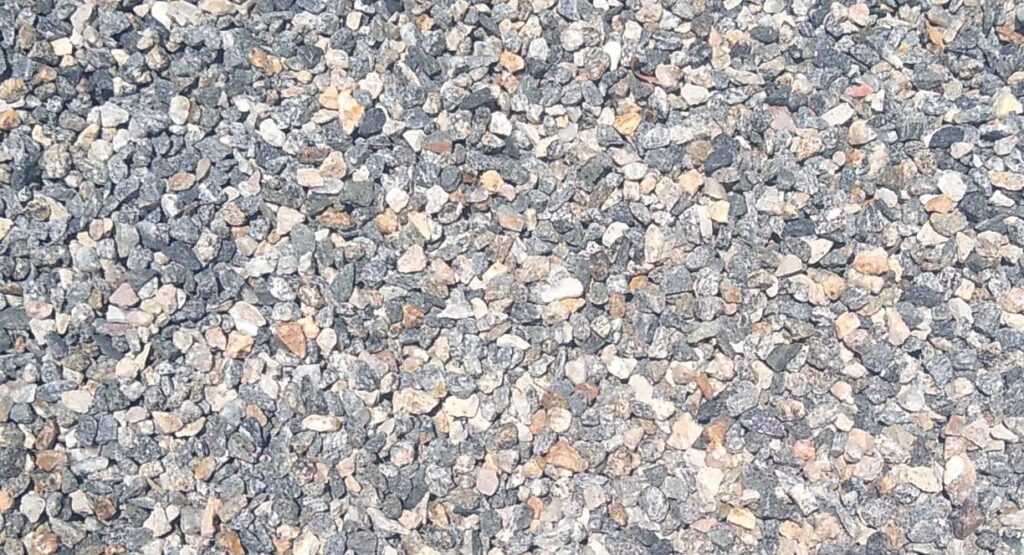Mulch is useful for keeping weeds out of gardens, keeping moisture in the soil, and keeping driplines covered.
Your options include:
-
- Green Mulch
-
- If you have freshly-dead sod, the dead sod will act as a temporary natural weed barrier, so you don’t necessarily need mulch – although mulch does provide an extra layer of coverage. The same goes for any landscape that already has a layer of natural mulch, like pine needles.
- If you’re planting densely, with short grasses or groundcovers between taller flowers and bushes, you may not need mulch in the long term. A healthy natural plant community will crowd out everything except invasive/noxious weeds.
- Gardens with “green mulch” (short grasses or groundcovers instead of mulch) stay cooler, wetter, and lusher than gardens with wood or rock mulch.
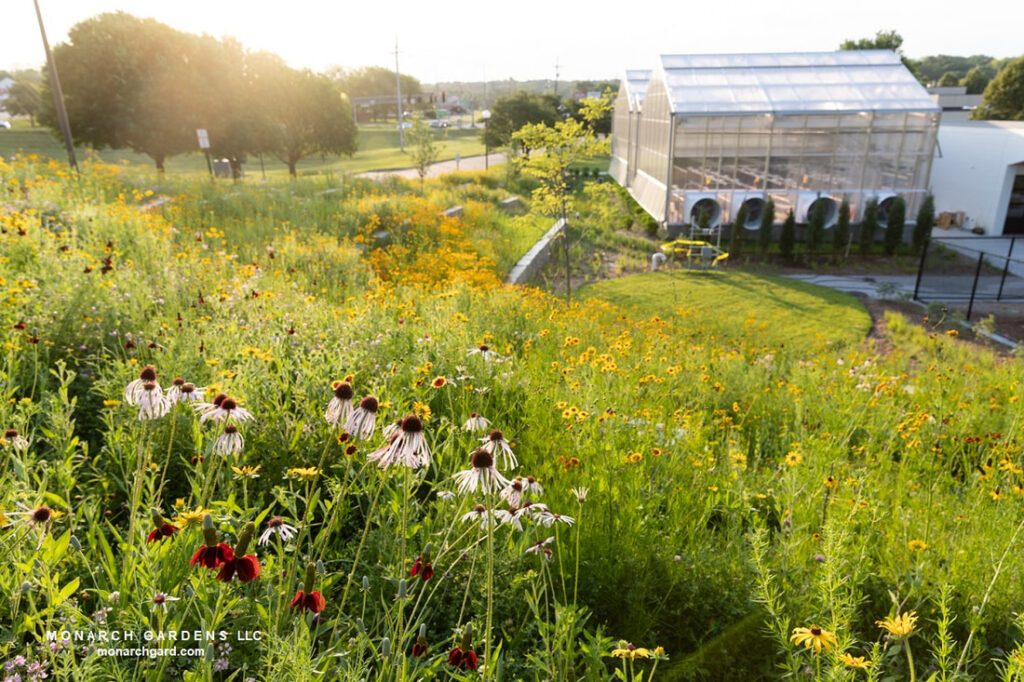
A mulch-free densely-planted prairie garden in Nebraska. Credit to Monarch Gardens LLC.
-
- Store-bought Wood Mulch
- You could use 1-2″ of normal wood mulch, which degrades in 1-2 years and then needs to be replaced, either with more mulch or with spreading plants. Our native prairie plants don’t seem to like large amounts of wood mulch, but often we use it as a temporary mulch that will give way to a green meadow over time. We usually only recommend this when or more one of the following is true:
- You are planting very densely (one plant per 1′-1.5′ square feet), so that you won’t ever need to replace the mulch; the beneficial plants will fill all the available spaces over time.
- You want to use mulch, and you have have mature trees that will drop lots of leaves. (Leaves left on top of gravel renders gravel mulches useless over time.)
- You want the extra weed coverage of mulch, but you’re on a budget; gravel mulch takes longer to move and spread, on top of being more expensive per ton/yard.
- You have a preference for the aesthetic of wood mulch.
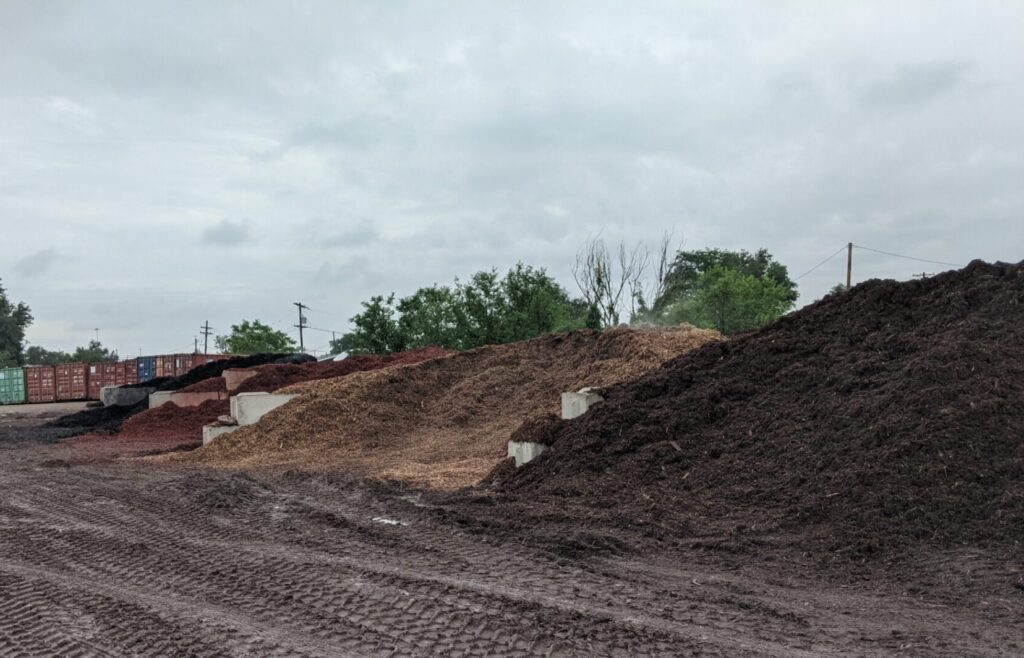
Wood mulch comes in different colors from landscape supply stores.
- You could use 1-2″ of normal wood mulch, which degrades in 1-2 years and then needs to be replaced, either with more mulch or with spreading plants. Our native prairie plants don’t seem to like large amounts of wood mulch, but often we use it as a temporary mulch that will give way to a green meadow over time. We usually only recommend this when or more one of the following is true:
- Green Mulch
Click here to see different wood mulch colors, types, and prices. (“Gorilla hair” knits together and lasts longer than normal wood mulch, although the additional price of that might be overkill if you are doing a dense planting.)
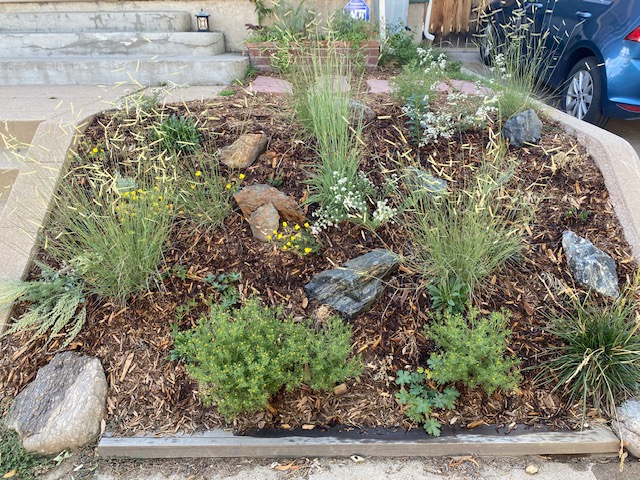
3. Wood Chips
-
-
- You could use 1-2″ of wood chips, aka arborist mulch, which has the advantage of being free (from Chip Drop or your local arborist) and lasting longer than normal wood mulch (~10 years). Again, if you have large trees, this will blend well with the leaves. Wood chips also tend to keep the ground cooler than typical wood mulch.
- Like typical wood mulch, prairie plants don’t love lots of wood chips, because they’re not used to it; there aren’t trees growing in the prairie! The other disadvantage is that leaves, dirt, stones, and branches are sometimes mixed into arborist mulch drops.
-
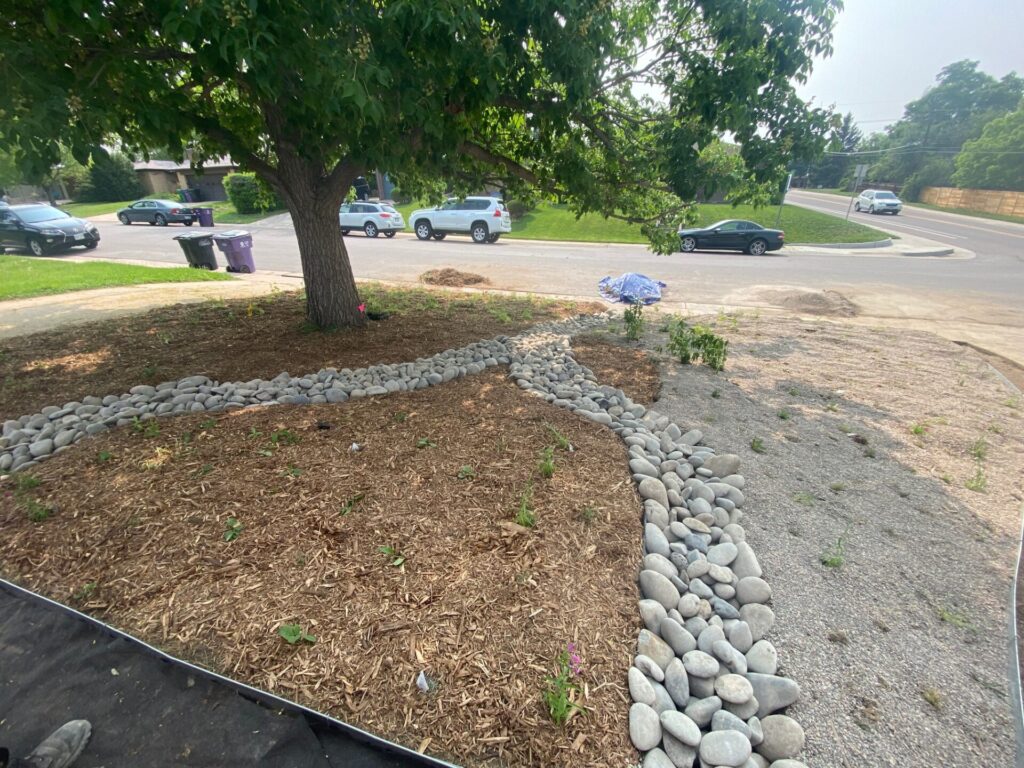
4. Chip Rock
-
-
-
- You could use 1-2″ of chip rock, which is basically pea gravel with rough edges. It knits together, which prevents it from blowing away or allowing weed/dirt access, and still lets water through to nourish the soil. This is ideal for our native prairie plants, which are better adapted to rock mulch than wood mulch, and like situations where their tops are hot and their bottoms are cool. Chip rock also doesn’t disappear like bark mulch; you never have to replace it.
- Contrary to popular belief, small gravel mulches actually keep soil cooler than store-bought wood mulch. Large sections of gravel do absorb heat, but you can choose a light shade of the chip rock to minimize that, and it won’t be a problem once the plants fill in (especially if you plant densely). There are some beautiful color options:
-
-
